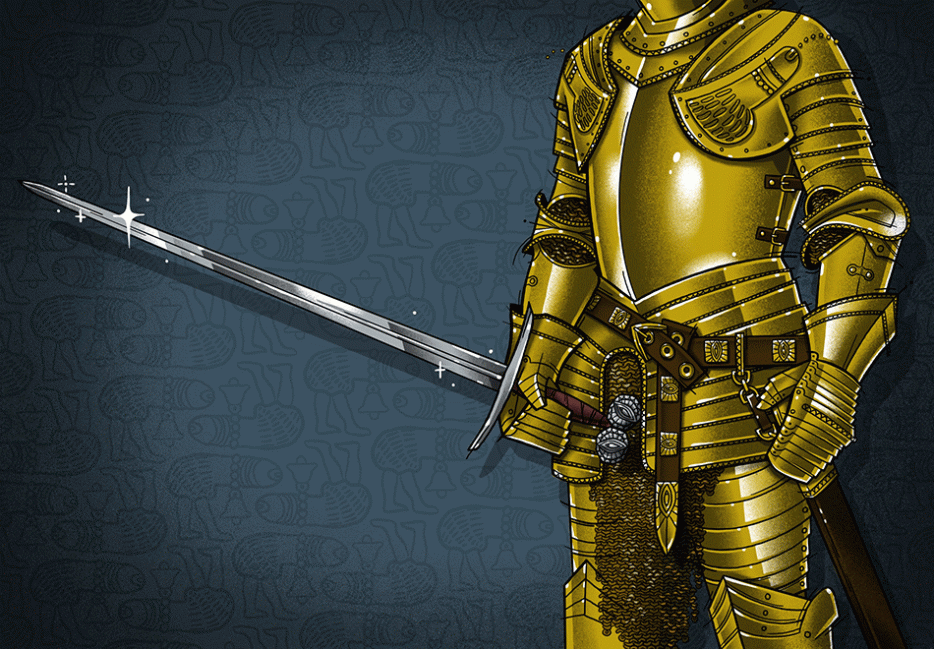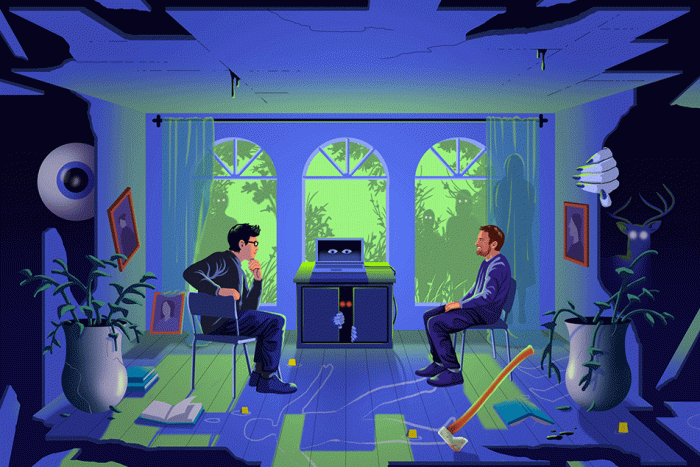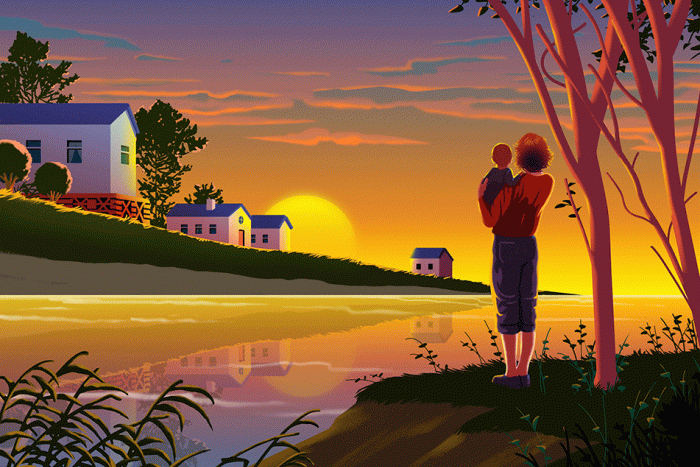What were we obsessed with, invested in, and beset by in 2022? Hazlitt’s writers reflect on the issues, big and small. Keep up with this year’s series here.
Imagine if, instead of going to work today—sitting in traffic, boarding a maskless crowded bus, or firing up Zoom—you climb out of your haybed, simmer sweet lambs’ milk and warm a hunk of yesterday’s bread. Your day goes by tickled by the grasses of the pasture, an eye on the sheep, then you hike up the mountain wrangling stragglers gingerly with your hazel crook. Everywhere you’re enchanted by birdsong, singing of the storm that passed under last night’s moon and the weather to come.
Alas, this isn’t your lot; it’s the life of Jude, the village shepherd in Ottessa Moshfegh’s medieval novel, Lapvona. But serene, Jude’s existence is not. The village wetnurse Ina calls him a “child of pain,” “the greediest of all the babes” she once nursed. For Jude, godliness requires an onslaught of sadomasochistic observances, including zealous self-flagellation on Fridays to absolve the violence he inflicts on others Saturday through Thursday. His son Marek fears he whips himself “too passionately,” recalling the sight of Jude: “sweaty, grunting, moving the whip across one shoulder, then the other, wincing and breathing so hard that spit drooled from his mouth, and then he sucked it in and spat it out violently, as though it pleased him, as though the pain felt good.”
The lash of medieval erotics stings everywhere in 2022, in films (Lena Dunham’s spin on Catherine Called Birdy, Robert Eggers’ The Northman), books (Lapvona and Katherine J. Chen’s Joan), fashion (chainmail and laced-up bodices at Eckhaus Latta), and the burgeoning genre of organcore from musicians like Kali Malone and Sarah Davachi. Medieval aesthetics titillate nowhere more than in TV and gaming (Disney’s remake of Willow, Amazon Prime’s new Lord of the Rings installment, House of the Dragon from HBO—all with videogame spinoffs).
It seems this year’s offerings from the Dark Ages want to raise a carnal, earthy prayer to the present age of fluorescence with its constant scrolling and omnipresent surveillance. Its plea: if this is light, give us Darkness. And the twenty-first century has a right to despair as mass shootings, police violence, and plague continue to curse this crumbling, unrepentant empire on this dying earth.
In this hour of need, the medieval invites escape, indulging fantasies of pleasure and pain. The light to Jude’s darkness, Lapvona village elder Grigor finds a more vanilla path to bliss. Fed up after a lifetime of servitude, famine, and so much death, his salvation is rooted in a “discovery of nature’s magic,” where the act itself of foraging wild herbs gives healing properties; an antiauthoritarian epiphany about the lord of the manor and his abuses; and a vision of God as the land itself, “the sun and moon and rain.” A time of light and shadow, dirt and gore, the medieval imaginary makes such ritual of earthly longing.
*
Sacramental invocation of the Middle Ages is nothing new. Disenchanted with their world, the Romantics venerated medieval times to condemn the ills of industrialization. The simple agrarian ways, attunement to nature, and hooded religiosity they saw in the feudal past illustrated a convenient antithesis to the excessive greed and poverty, brutal working conditions, and ugly dirty cities of their time. And for hundreds of years, to varied political ends, images of “pure” medieval European societies and their exalted spawn have been glorified to further nationalist and racist ideals—from Thomas Jefferson’s Anglo-Saxon virtues and the Victorian King Arthur craze to 4H-style “Fitter Families” eugenics contests and the forced sterilizations of Black, Indigenous, Latinx, Asian and disabled people across North America. Now we see Norse symbols at the Capitol insurrection. Whether towards romantic or fascist ends, this looking back always hinges as much on remembering (or inventing) the past as shaping futures.
What new (or recycled) versions of the imagined Middle Ages came into view in 2022 and to what ends? Mostly we see a simple life, albeit brutal, apparently prior to the lasting harms of colonialism and free from the messy contingencies of the now. There’s nothing quaint in being married off, sold like livestock, or fighting off the Dark Lord of Mordor, but the sheep, unfettered landscapes, and truth in the stars nevertheless work their humble spell.
In reality, medieval Europe wasn’t simpler, or so different from today. Worldwide trade, travel, and innovation proliferated; Jewish, Turkish, African, Arabic, Mongol, and Roma peoples—to name a few—lived amongst the Germanic clans portrayed in today’s mass-market medieval lore, not always peacefully; and a kaleidoscope of faiths existed, continually shifting forms. Combating white-washed, homogenous versions of the period has become of primary concern for medieval scholars, like Dorothy Kim, who see themselves as “ideological arms dealers.” By studying Black and Indigenous people and people of colour during the Middle Ages, not only in Europe but globally, scholars like Kim and the organization Medievalists of Color want to argue that an antiracist future entails a wider vision of the past, especially a time so fanatically aestheticized today.
Some of the recent trysts with medieval times nod to that wider vision, with fiery women (in Matrix, Lauren Groff gives us a mighty abbess, Marie, who creates an empire against all chauvinistic odds, populated solely by women and reachable by a labyrinth that only the Mother Superior and her holy daughters can penetrate), queer people (nuns in Matrix enjoy the finest utopian perk, lesbian sex; in Catherine called Birdy we meet another young shepherd, Perkin, played by Michael Woolfitt, a tender budding gay), and people of colour populating the medieval world (Catherine Called Birdy also portrays Black characters in the English shire—for one, Lady Berenice Sidebottom, played by Mimî M. Khayisa, a young bride brought from Gascony to wed a coarse, shriveling English lord. Despite her position of supposed subservience as his wife, she tells him, “I go where I want and I say what I please!”). In Lapvona, the town comprises “dozens of families of different backgrounds” and gets repopulated after drought, famine, and plague by people from all cardinal directions; they mix and don’t think much of it. It’s only nobles like Trump-ish Lord Villiam who care about lineages.
*
Historical fiction sits on the other side of the speculative fiction coin, a ticket out of the present whether it’s heads or tails. Yet unlike works by Octavia Butler or Ursula K. Le Guin, when the medieval stories that inundate our culture—wherever they fall between the poles of historical fiction like Hilary Mantel’s Cromwell series and fantasy extremes like Game of Thrones—attempt to remember the past and shape futures, they tend to edge closer to cosplay than counternarrative. Maybe an aesthetics so steeped in ahistorical whiteness dooms itself: a shiny time capsule with nothing inside. Try as the next novelist of filmmaker might, it’s difficult to imagine a medieval tale that smites the sins of our countries’ pasts, the yokes of consumer capitalism, and the binaries and constructs of the mind.
As futuristic as it may seem to live in a time where people get robots to clean up after them and make millions in virtual real estate, many of us still fork over the fruits of our labour to the lords of the land and worship the same gods. Only time separates now from then and bygone mysticism beckons— astrology and tarot, silent retreats and organlike drones in the club. Searching for juicy communion doesn’t mean you find it; so for Moshfegh: “I feel stupid when I pray” reads the epigraph to Lapvona, quoting Demi Lovato. In a world so despairing, flickering screens like candles to the void, the medieval erotics of today vibrate with a hunger, however stupid, for technologies of the spirit, whether they’re to be found in the pleasures of the flesh, the outline of a god, or the bleating of a sheep.






